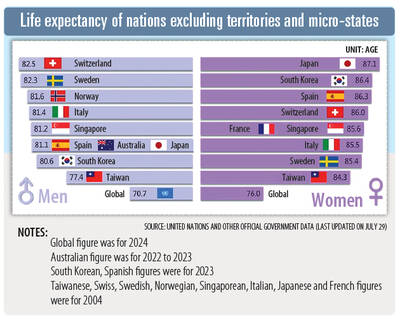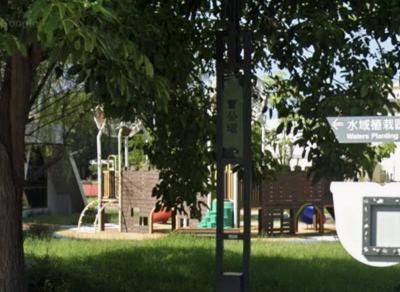Draft regulations for the establishment of boundaries for Aboriginal land and villages, announced on Tuesday by the Council of Indigenous Peoples and said to be the means to re-establish rights to land for Aboriginals across 800,000 hectares of traditional territory, met with strong criticism from Aborigines and lawmakers yesterday.
The Indigenous Youth Front and legislators across party lines criticized the draft for not including privately owned land, adding that the draft regulations are a slight against Aborigines.
The Indigenous Youth Front said that by excluding privately owned land from traditional territories, the end result would be fragmented traditional territory.
Excluding such land would be to sell out their ancestors, it said.
New Power Party (NPP) Legislator Kawlo Iyun Pacidal, an Amis, said that the regulations would make Aborigines “drifters on their own land” and deprive them of autonomy to determine their own village affairs.
The regulations would also make it easier for corporate entities to establish resorts on Aboriginal land, Kawlo said.
Democratic Progressive Party (DPP) Legislator Chen Ying (陳瑩), a Puyuma, said that it was “absurd” and “unacceptable” that the council is unable to perfectly draw the borders of traditional territories.
Chinese Nationalist Party (KMT) Legislator Sufin Siluko (廖國棟), an Amis, said that the draft regulations ignored suggestions he made last year.
Siluko in June last year called for discussions on a new Aboriginal policy platform and laws that would enable Aborigines to reclaim land taken from them.
He said yesterday that as the draft regulations would be unable to protect Aborigines’ right to land, the council should retract the proposal.
Council of Indigenous Peoples Minister Icyang Parod said the council had contacted groups to hear their opinions and negotiate the proposed legislation.
“The draft regulations would restore land justice to Aborigines,” Icyang said. “We have to pass the regulations, and we will not retract the proposal.”
“The Constitution protects the rights of property of the people and if the council included privately owned land in its draft regulations, it would not only be unconstitutional, but would create the crazy situation where land owners would have to ask the council’s permission to use it,” he said.
“The draft regulations are the first step toward re-establishing Aborigines’ right to land,” DPP Legislator Kolas Yotaka, an Amis, said.
The draft regulations were based on the Indigenous Peoples Basic Act (原住民基本法), which only regulates public land, Kolas said.
The government would have to seek alternative legal channels to purchase private land improperly taken from Aborigines and then return it, Kolas said.
Tunkan Tansikian, a professor in the Department of Indigenous Affairs and Ethno-Development at National Dong Hwa University, said that Aboriginal land has been chopped up and sometimes bought privately because of complicated historical reasons.
“Excluding private land from the regulations would be to take the middle ground to minimize conflict,” said Tunkan, who is a former deputy minister of the council.
According to council estimates, efforts by Aborigines to regain land from the government since the 1990s have seen approximately 20,000 hectares of land given “conserved” status.
Should the draft regulations be passed, Aborigines will be able to regain about 800,000 hectares of land, the council said.
By combining traditional territories with conserved land, Aborigines would be able to lay claim to a little over 1 million hectares of land, the council said.

The inspection equipment and data transmission system for new robotic dogs that Taipei is planning to use for sidewalk patrols were developed by a Taiwanese company, the city’s New Construction Office said today, dismissing concerns that the China-made robots could pose a security risk. The city is bringing in smart robotic dogs to help with sidewalk inspections, Taipei Deputy Mayor Lee Ssu-chuan (李四川) said on Facebook. Equipped with a panoramic surveillance system, the robots would be able to automatically flag problems and easily navigate narrow sidewalks, making inspections faster and more accurate, Lee said. By collecting more accurate data, they would help Taipei

TAKING STOCK: The USMC is rebuilding a once-abandoned airfield in Palau to support large-scale ground operations as China’s missile range grows, Naval News reported The US Marine Corps (USMC) is considering new sites for stockpiling equipment in the West Pacific to harden military supply chains and enhance mobility across the Indo-Pacific region, US-based Naval News reported on Saturday. The proposed sites in Palau — one of Taiwan’s diplomatic allies — and Australia would enable a “rapid standup of stored equipment within a year” of the program’s approval, the report said, citing documents published by the USMC last month. In Palau, the service is rebuilding a formerly abandoned World War II-era airfield and establishing ancillary structures to support large-scale ground operations “as China’s missile range and magazine

STATS: Taiwan’s average life expectancy of 80.77 years was lower than that of Japan, Singapore and South Korea, but higher than in China, Malaysia and Indonesia Taiwan’s average life expectancy last year increased to 80.77 years, but was still not back to its pre-COVID-19 pandemic peak of 81.32 years in 2020, the Ministry of the Interior said yesterday. The average life expectancy last year increased the 0.54 years from 2023, the ministry said in a statement. For men and women, the average life expectancy last year was 77.42 years and 84.30 years respectively, up 0.48 years and 0.56 years from the previous year. Taiwan’s average life expectancy peaked at 81.32 years in 2020, as the nation was relatively unaffected by the pandemic that year. The metric

A 72-year-old man in Kaohsiung was sentenced to 40 days in jail after he was found having sex with a 67-year-old woman under a slide in a public park on Sunday afternoon. At 3pm on Sunday, a mother surnamed Liang (梁) was with her child at a neighborhood park when they found the man, surnamed Tsai (蔡), and woman, surnamed Huang (黃), underneath the slide. Liang took her child away from the scene, took photographs of the two and called the police, who arrived and arrested the couple. During questioning, Tsai told police that he had met Huang that day and offered to